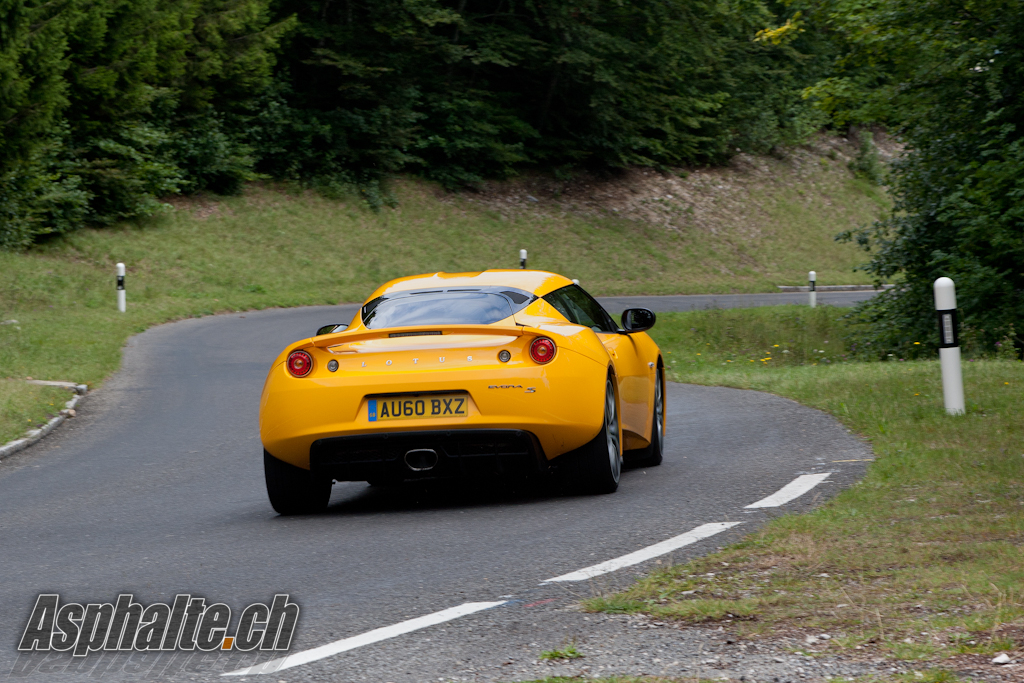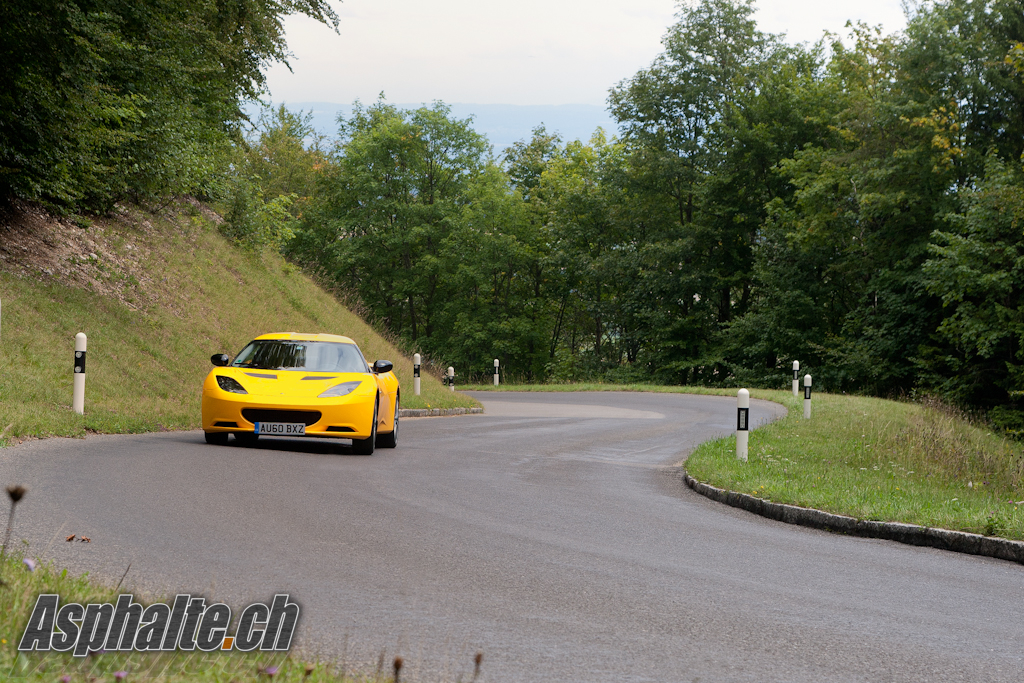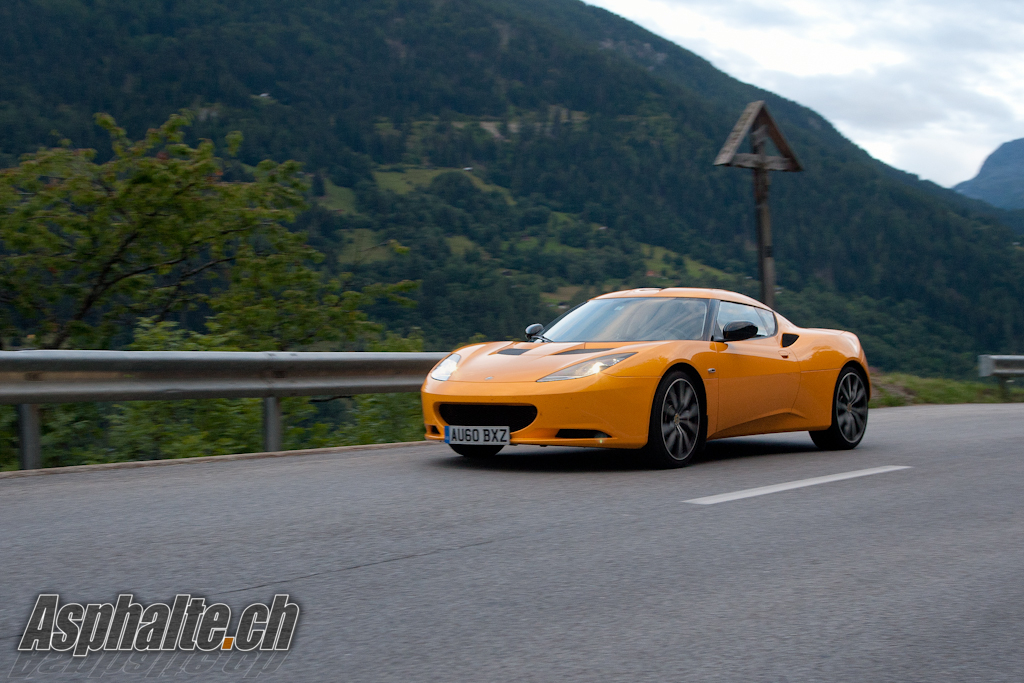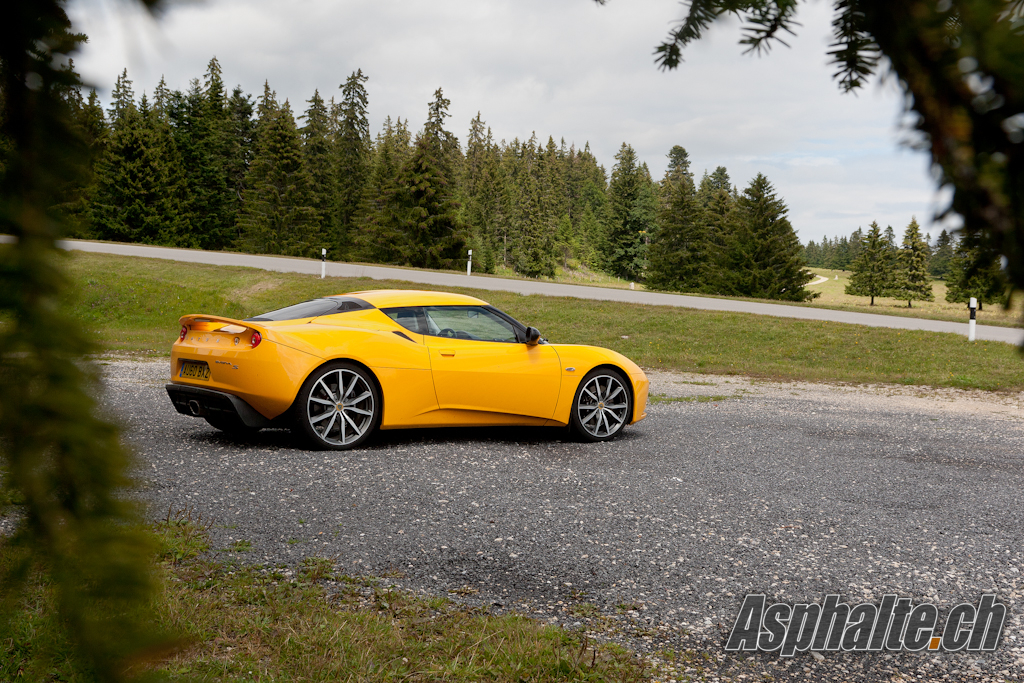Road Test Lotus Evora S: the Lotus Notes
However, rubber on asphalt, the Lotus engine is entertaining, starting with great work Hethel’s acoustic engineers. The exhaust note is ample, with rich harmonics in throughout the mid range. Window down, subtle supercharger whine adds tension and personality to the rev build up. Unlike too many blown engines, there’s no incentive to short-shift. Pulling gears all the way to the rev limit is the most efficient and entertaining way to extract max performance from the V6. There’s no lag, thrust is linear, progressive and sustained, all the way to 7000 rpm. On open roads, the Evora S piles up pretty impressive momentum for the category, subjectively outpacing the Porsche crocodile in sheer straight line might. I would not be surprised if a dyno run showed higher power numbers than Lotus claims. Whether the intercooler manages to maintain this level of performance under high temperatures and heavy solicitation is a possible caveat. Fuel mileage remains reasonable for a supercharged 3.5L V6: we averaged 12.5L/100km, with significant distances on freeways.
The Evora S gearchange mechanism has been widely criticized and deserves it. It represents a serious handicap in fast driving. The throw is too long, lateral guiding approximative, making shifts imprecise and unsatisfying. Downshifting third to second caused me many issues, finding myself either with a pace-killing 3-4 or a faintly dangerous 3-neutral. It is not excessive force, the lever feels quite light actually, but lack of precision in the mechanism. It is possible that this particular early productioncar with 25’000km of press drives was not at its best, but Lotus is well aware of the issue and working on a most welcome and crucial fix for 2012. This engine deserves better, so does the chassis.
Steering feels light, especially around the center. The column telegraphs information about road texture, but I was not overwhelmed with feel when it comes to grip levels: difficult to sense whether rubber is at Defcon 3 or Defcon 4. It is a handicap as cornering speeds are high, with a very neutral stance, very low understeer and a zest of rear end tunability when powering out from a curve. I almost only drove the car in Sports mode as the more direct throttle map eases heel & toe, but did not feel much in the way of an impact on an otherwise very discrete ESP. The choice of spring and damper rates demonstrate Lotus know-how in chassis tuning, earning the highest mark in terms of body control and poise. Firm but never harsh, absence of body roll, and a superb ability to erase mid corner bumps or dips. I would expect the Evora S to be very much at ease on a fast, flowing & bumpy track like the Nürburgring Nordschleife.
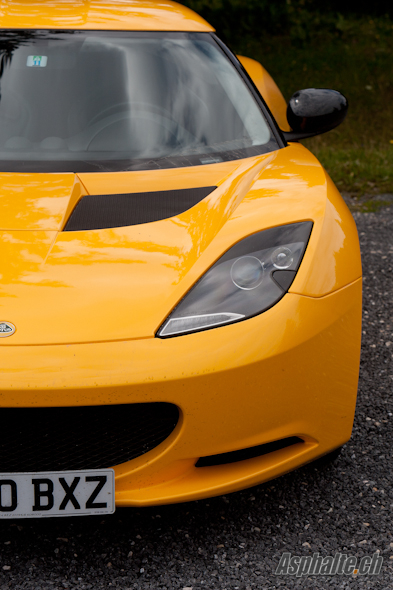 | 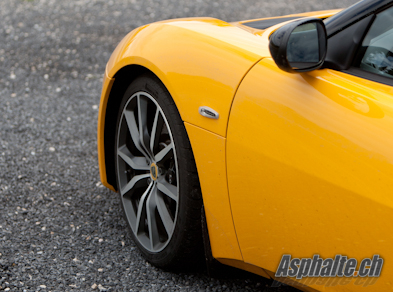 |
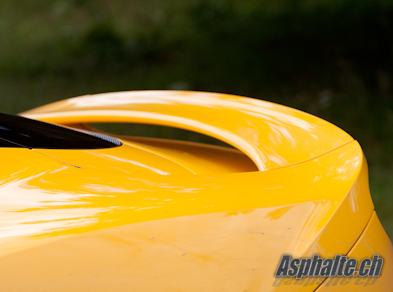 |
With shrinking production volumes, Lotus has to resolve a challenging economic situation, with high costs and a contrasted value proposition, alternating the very good (chassis and engine) and the pretty bad (ergonomics, gearbox command, finish). Lotus engineers have demonstrated their talent in the motoring and chassis departments, and dressed it beautifully, but it takes far more to compete with Porsche, furthermore at equivalent prices on paper. In practice, the Pfenninger dealership in Zürich is prompt to point that 10-20% rebates are negotiable depending on exchange rates. About dozen Evoras were sold in Switzerland in 2010, and 13 had been registerd as of June 30th 2011, a sign that the car struggles to convince.
Lotus does not lack the will to improve the product and transform the company to become a real contender, and future evolutions of the Evora will allow to gauge their progress on this tortuous and steep path toward excellence. First impressions often prevail, but sometimes deserve to be nuanced. While I am critical of the Evora S for its overall value proposition, it is an enjoyable car to drive and it ignites optimism for its evolution potential for the short and mid term.

